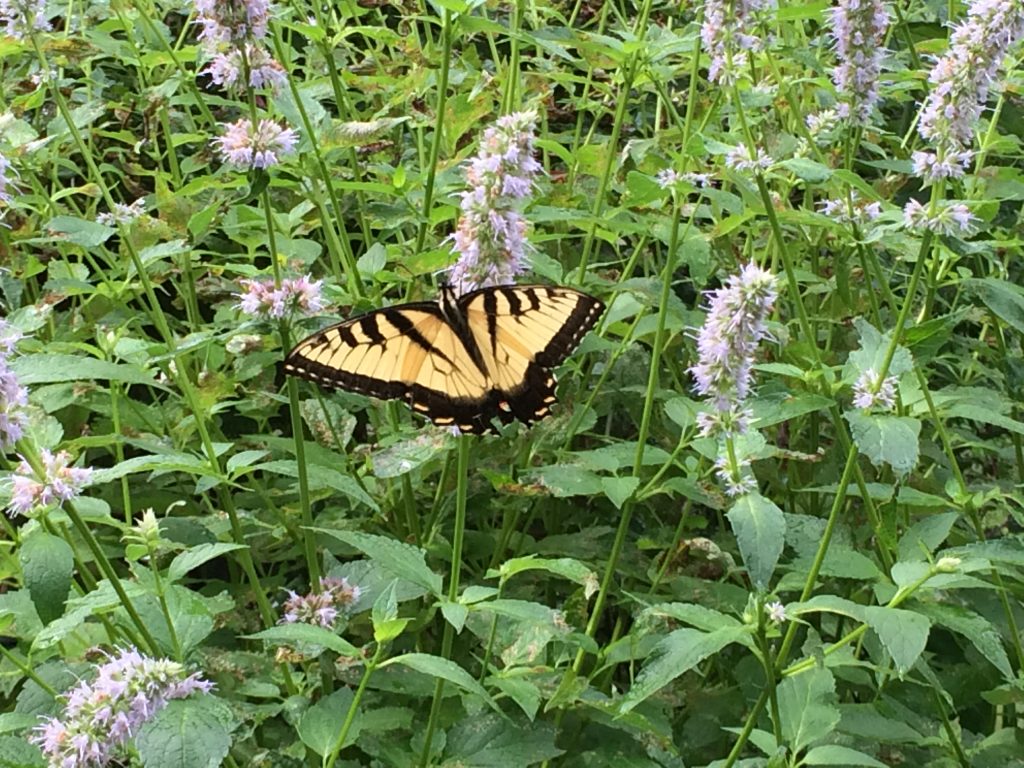
Some of you may have enjoyed the discussion and tour of the church’s gardens, including the butterfly garden, tended by our “Gardeners of Eden” on July 10. Have you considered planting your own garden to nurture butterflies and other insects? Fall can be a great time to do some planting. No mud or frozen soil, and your plants can get established before winter arrives, letting you reap the benefits of your butterfly-attracting nectar the very next season.
Why plant a butterfly garden? Butterflies are attracted to brightly colored, fragrant flowers, and they feed on nectar produced by the flowers. As the butterflies travel from one flower to another, they pollinate the plants, resulting in further development of plant species. Many plants rely on pollinators, such as butterflies, for reproduction. Butterflies tend to prefer native plants, and landscaping with native plants is a more sustainable practice since they are naturally adapted to the climate. The adult butterfly and the larval caterpillar are also good food sources for wildlife, such as birds and lizards.
Some things to consider: Try to grow both plants that caterpillars like to eat, and plants that produce nectar for the adult butterflies. Some examples of “caterpillar food” are: parsley, dill, milkweed, and even many common weeds! Some examples of “butterfly food” (nectar) are: butterfly bush, giant hyssop, coneflower, bee balm, black-eyed susan, phlox, and coreopsis. You can find many of these plants in the church’s butterfly garden.
Want to learn more? There are many informative sites on the web; you can start with these: http://www.butterflywebsite.com/butterflygardening.cfm or http://www.nybg.org/gardens/home-gardening/tips/butterfly-gardens.php.
